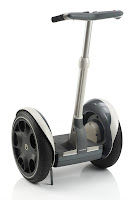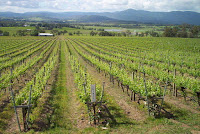DR BURKLIN
WOLF TROCKEN PFALZ RIESLING 2009 - The Bűrklin-Wolf estate is based in the Mittelhaardt, the
quality core of Germany’s world-renowned Pfalz. Since the 2001 vintage Bűrklin-Wolf
have classified their wines according to the vineyard site (similar to
Burgundy) rather than sugar weight (as the 1971 German wine laws dictate). They
have discovered that today’s top vineyards are exactly the same as those
identified in the 1828 Bavarian Land Taxation Laws: A time when these vineyards
produced some of the most expensive and highly regarded wines in the world.
This is a great introduction (or a welcome return) to the
Pflaz style. Citrus, stone fruits and a mineral undertone. Dry (trocken means
dry in this context) and clean with good fleshy fruit and mid-weight body.
DR LOOSEN DR
L DRY MOSEL RIESLING 2010 - The King of the Mosel. Owning sizeable amounts of land
across the great vineyards and villages of the region, Ernie (not actually a
Doctor) and his team craft the best drinking wines out of the whole region,
while the top end wines cellar and improve for a long time.
An easy drinking, zesty style of Riesling that offers
lovely mineral, citrus and floral notes while having nice weight in the mouth
and plenty of clean acid.
MAX FERD
RICHTER ESTATE MOSEL RIESLING 2009 - There are many producers who are more recognisable in the
Mosel, but Dr Richter at the family Estate consistently makes some of the best
and most balanced Rieslings from the region. In great years like 2009 even the
entry level wines will benefit from age. The Spatlese level wines are simple
amazing too.
Produced entirely from Estate fruit this wine has juicy,
ripe fruit and crunchy crisp green apple. The palate is off‐dry, perfectly
balanced, fine and mineral.
MARC BREDIF
VOUVRAY LOIRE VALLEY 2009 Chenin Blanc may not be the most popular or the most
famous wine grape, but the good examples are seriously good! Lovely,
fleshy/flowery apples and pears, a nice mineral - flinty streak, lemon zest and
a touch of dough. I have always described good Chenin as feeling ‘pillowy’ and
I stand by that. Round and fluffy mouth feel but the zesty acid kicks it into
shape. Great balance and harmony. Entirely too drinkable, but like all great
Chenin it will age surprisingly well (and long). If you are thinking of
cellaring, drink from 2019-goodness knows when.
BERNARD
DEFAIX LES VAILLON CHABLIS 1ER CRU 2009 - The estate owns 25 ha of vineyards in Chablis of which
half are Premier Cru and the largest holder of the famed Cote de Lechet. A
natural approach in used in the vineyard and they are getting close to organic
certification. The wines are made to be pure, fresh and textural.
Vaillon gernerally makes a more round style of Chablis due
to the higher content of clay in the soil. This wine shows crisp apples, and
some pepper and leesy/dough like notes. The palate has a hint of richness of
texture, and some stoney/chalky minerality. Overall it is well balanced and has
a classic bone dry finish. Will fill out with more time.
PRAGER HINTER
DE BURG WACHAU GRUNER VELTLINER 2009 - Innovative is his approach winemaker Toni Bodenstein has
been in control of winemaking since the early nineties and has positioned the
Prager estate as one of the very top echelon. The estates vineyards cover 13ha;
65% planted to Riesling, 25% Gruner Veltliner. A strong use of stainless steel
retains freshness in the wines without sacrificing the lovely Gruner texture
that everyone loves.
Like drinking some divine tea. This wine has apple
blossom, lemons, white flowers, peaches, white pepper and some savoury leesy
notes. The palate is lighter than the nose would suggest and drier. But has
great fruit richness and amazing length. So much complexity packed into one bottle.
Very enjoyable.







